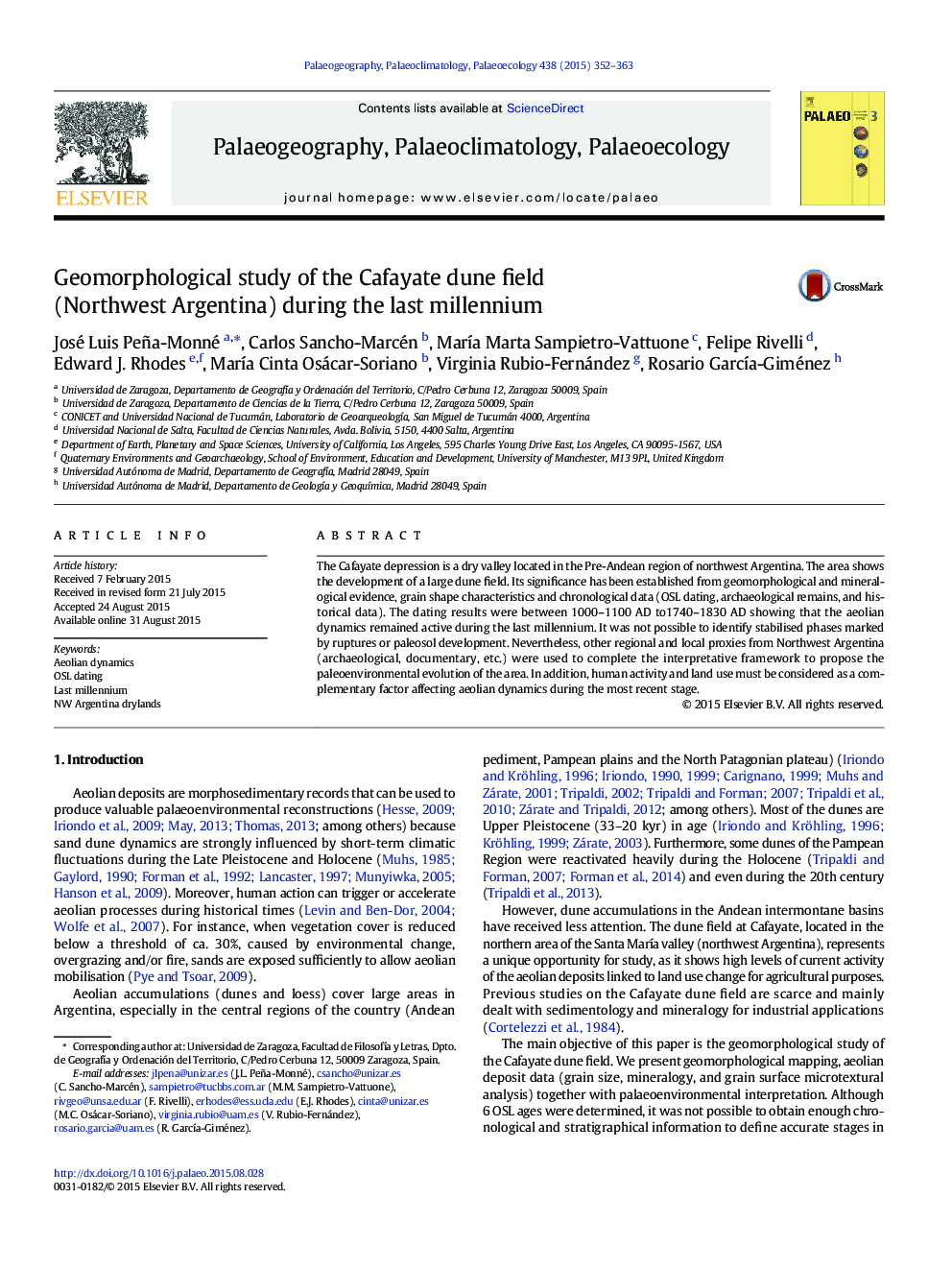| Article ID | Journal | Published Year | Pages | File Type |
|---|---|---|---|---|
| 6349651 | Palaeogeography, Palaeoclimatology, Palaeoecology | 2015 | 12 Pages |
â¢An extensive dune field located in Northwest Argentina was studied.â¢Geoarchaeological, mineralogical, geomorphological, and historical data were used.â¢Six OSL age determinations were made over the dune field.â¢Palaeoenvironmental reconstruction over the last millennium was made.â¢Dry and wet periods were established.
The Cafayate depression is a dry valley located in the Pre-Andean region of northwest Argentina. The area shows the development of a large dune field. Its significance has been established from geomorphological and mineralogical evidence, grain shape characteristics and chronological data (OSL dating, archaeological remains, and historical data). The dating results were between 1000-1100Â AD to1740-1830Â AD showing that the aeolian dynamics remained active during the last millennium. It was not possible to identify stabilised phases marked by ruptures or paleosol development. Nevertheless, other regional and local proxies from Northwest Argentina (archaeological, documentary, etc.) were used to complete the interpretative framework to propose the paleoenvironmental evolution of the area. In addition, human activity and land use must be considered as a complementary factor affecting aeolian dynamics during the most recent stage.
